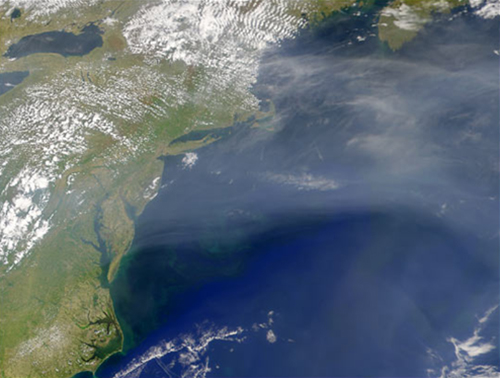Good Is Not Enough: Improving Measurements of Atmospheric Particles
Submitter:
Kassianov, Evgueni — Pacific Northwest National Laboratory
Area of research:
Radiation Processes
Journal Reference:
Science
When it comes to understanding how atmospheric particles affect climate, one measurement cannot tell the whole story, especially in areas that have not been studied. A research team led by Pacific Northwest National Laboratory developed an approach that links the scattering coefficient, a measure of how much tiny particles suspended in the atmosphere scatter sunlight, with other particle properties. These properties include particle size, chemical composition, and ability to soak up atmospheric water. By linking these measurements, scientists can better understand the effects of a wide range of particles, including those that scatter sunlight (i.e., non-absorbing particles) and those that both scatter and absorb sunlight (i.e., absorbing particles).
"We found that one property influenced the others," said Dr. Evgueni Kassianov, PNNL atmospheric scientist and lead author of the article published in Atmosphere. "Using improved airborne measurements of particle scattering and absorbing properties and chemical composition, we can better measure their size distribution as well."
Impact
The PNNL scientists collaborated with colleagues at the University of Nevada and Brookhaven National Laboratory to develop a mathematical framework for calculating the total scattering of both non-absorbing and absorbing particles at ambient conditions based on data collected from aircraft. They then tested the approach using data collected by the ARM Aerial Facility’s Gulfstream-1 aircraft during the recent ARM Facility's Two-Column Aerosol Project, led by Dr. Larry K. Berg, a PNNL researcher and co-author of the journal article.
Measurements included optical, microphysical, and chemical properties of weakly absorbing particles. The team compared the scattering coefficient obtained by their approach with the scattering coefficient measured onboard the aircraft and found good agreement between the estimated and measured scattering coefficients for a wide range of observational conditions. The new approach will enable scientists to accurately estimate these particle properties, even in areas that had not been studied.
Summary
Aerosols—tiny airborne particles of dust and pollution suspended in the atmosphere—affect the atmosphere and the surface of Earth by scattering and absorbing light. The sun’s light scatters when it is reflected off the particles and redistributed. The particles’ absorption of sunlight heats up the atmosphere while simultaneously reducing the amount of sunlight reaching Earth. The combined effects of scattering and absorption can either cool or warm the Earth's surface and the atmosphere itself. Understanding the properties associated with these particles gives scientists an edge in estimating the particles’ impact on our climate.


